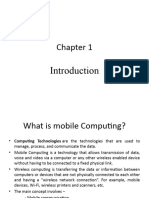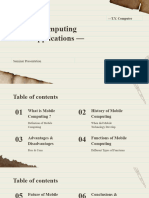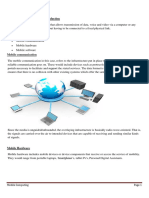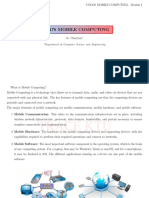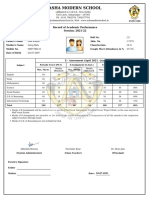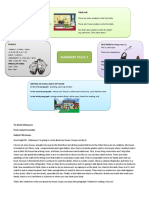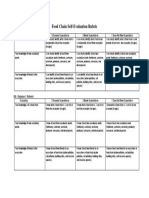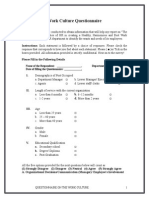0% found this document useful (0 votes)
11 views10 pagesMobile Computing Introduction
Mobile computing encompasses technologies and strategies that allow users to access information and resources while on the move, utilizing devices like smartphones, tablets, and laptops connected via wireless networks. It has transformed communication, work, and e-commerce, enabling remote access and collaboration across various sectors. The evolution of mobile computing includes advancements in hardware, software, and infrastructure, leading to the integration of IoT and the potential of 5G networks for enhanced user experiences.
Uploaded by
Amsa veniCopyright
© © All Rights Reserved
We take content rights seriously. If you suspect this is your content, claim it here.
Available Formats
Download as DOCX, PDF, TXT or read online on Scribd
0% found this document useful (0 votes)
11 views10 pagesMobile Computing Introduction
Mobile computing encompasses technologies and strategies that allow users to access information and resources while on the move, utilizing devices like smartphones, tablets, and laptops connected via wireless networks. It has transformed communication, work, and e-commerce, enabling remote access and collaboration across various sectors. The evolution of mobile computing includes advancements in hardware, software, and infrastructure, leading to the integration of IoT and the potential of 5G networks for enhanced user experiences.
Uploaded by
Amsa veniCopyright
© © All Rights Reserved
We take content rights seriously. If you suspect this is your content, claim it here.
Available Formats
Download as DOCX, PDF, TXT or read online on Scribd
/ 10















